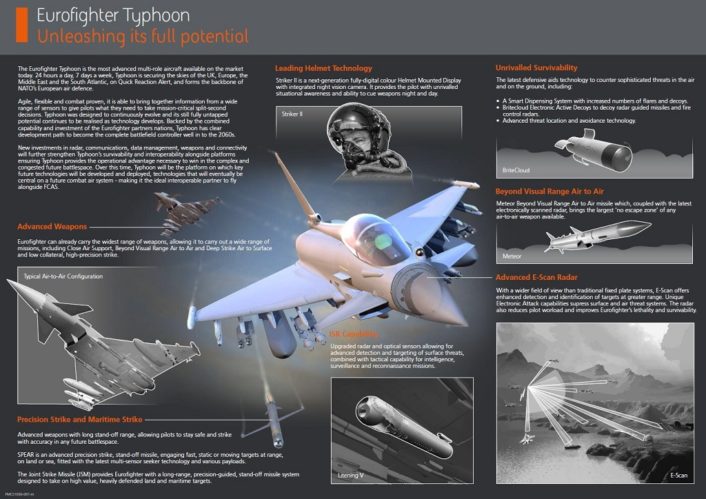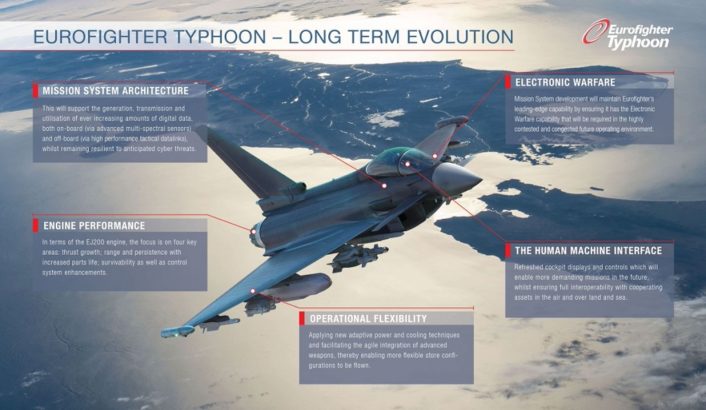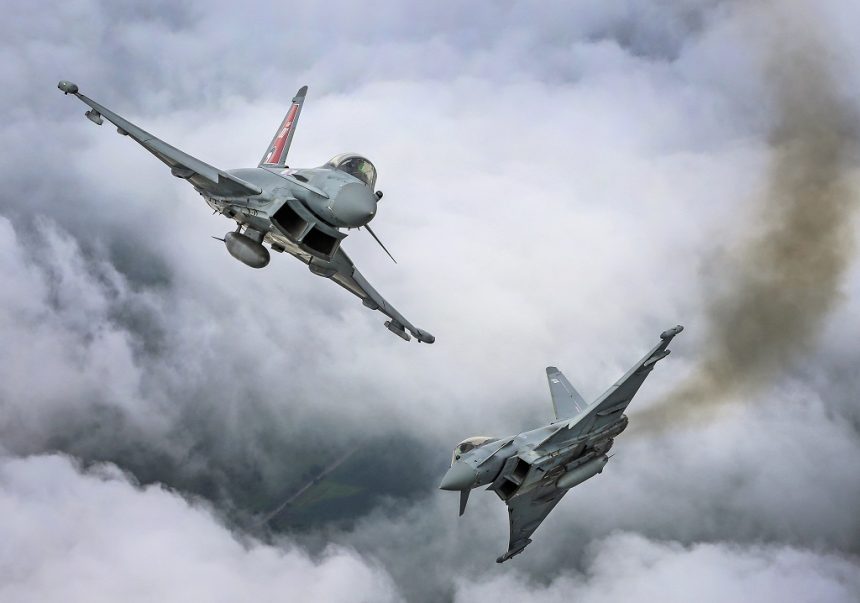The Royal Air Force started new sensors’ integration and the Long Term Evolution program will bring even more capabilities.
BAE Systems Air announced that is about to deliver the final Eurofighter Typhoon for the Royal Air Force. Andy Flynn, Eurofighter and Centurion capability director, told reporters during a briefing BAE’s facility in Warton on August 7 that the Typhoon made its second flight from the same facility on August 5 and is now proceeding with the integration of the remaining equipment and subsequent trials.
The Royal Air Force had 160 aircraft on order, with deliveries started 16 years ago. After the completion of this order, BAE Systems will continue with the production of 24 Typhoon destined to Qatar and major structures of 28 Typhoons for Kuwait that will be assembled in Italy by Eurofighter partner company Leonardo.
Typhoons for Kuwait and Qatar are considered the most advanced in production. They will be equipped with the new AESA (Active Electronically Scanned Array) Captor-E radar, produced by the Euroradar consortium, that is being tested in Germany aboard the IPA8 (Instrumented Production Aircraft 8) and will be soon tested aboard IPA5 from Warton. Another sensor that will be tested in Warton in support of this purchase is the Lockheed Martin Sniper targeting pod.
Deliveries of Kuwait aircraft should start next year, while Qatar jets will be delivered from 2022.

The Royal Air Force is planning to have the Typhoon in service until 2040. To replace capabilities that would have been lost with the Tornado retirement, the RAF and BAE Systems started Project Centurion, integrating MBDA’s Meteor, Brimstone and Storm Shadow missiles on the Typhoon FGR4 fleet in 47 months. BAE Systems and the 41 Squadron (RAF’s test and evaluation squadron) are already working on the next iteration of Project Centurion, test flying the Litening 5 targeting pod in order to optimize its operation by Typhoon pilots and easing their workload. According to Flynn, the integration will be completed by the end of next year. Work is also underway on a new version of the Pirate system, the FLIR/IRST (Forward Looking InfraRed/InfraRed Search and Track) sensor installed in front of the Typhoon’s cockpit, and the new BAE Striker II HMD (Helmet Mounted Display) helmet.
Another interesting system being integrated is the Leonardo BriteCloud Expendable Active Decoy, a compact active radar countermeasure designed to be deployed from standard chaff/flare dispensers instead of being deployed from dedicated pods like the one currently in use by the Typhoon. The small canister, with the same size of a soda can, has spring-loaded fins that open automatically to stabilize the decoy when is deployed and contains a miniaturized radio-frequency (RF) jammer, based on Digital RF Memory (DRFM), that is meant to attract and incoming radar-guided missile away from the aircraft. 33 BriteCloud rounds were dispensed from Typhoons of the 41 Squadron against simulated threats during tests in April 2019. The RAF is planning to declare the Initial Operational Capability for the system by the end of the year.

Further improvements will be introduced by the Long Term Evolution program announced by Eurofighter and NETMA (NATO Eurofighter & Tornado Management Agency) during the Paris Air Show 2019. The program, aimed at the evolution of both the aircraft and the EJ200 engine, will span a total of 19 months for the aircraft and 9 months for the engine elements.
Flynn said there are more than 50 candidate technologies being considered by the evolution review, including advanced multi-spectral sensors and high performance tactical datalinks to improve the mission system architecture, upgrades to the Praetorian Defensive Aids Sub System (DASS), new cockpit displays and controls for a better human-machine interface, new advanced weapons and adaptive power and cooling techniques to improve the operational flexibility and better engine performance, especially regarding thrust, range, survivability and control systems.
Some of those potential upgrades could be extended also to the Tempest sixth-generation fighter and vice versa, making them more interoperable.









